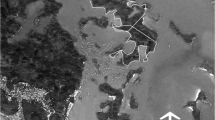Abstract
Within a species, habitat quality may be a factor causing different activity budgets between populations. The habitat of white-headed langurs (Trachypithecus leucocephalus) has been seriously disturbed in Fusui Rare and Precious Animal Nature Reserve, China, where we carried out a study of their socioecology from September 1997 to September 1998. We collected data on langur activity budgets from the main population located in the central part of a group of limestone hills. We classified habitat quality into 4 grades according to the extent of human disturbance. We showed that the two main study groups of white-headed langurs spent on average 50% of time resting, 13% feeding, 18% moving (including foraging), 11% grooming, and 7% playing. Langur time budgets showed no significant seasonal change, but they differed among different sex-age classes. Infants and juveniles spent about 20.3% of time playing, whereas adults spent only 0.2% playing. The group in high quality habitat engaged less in feeding and more in playing than the group in low quality habitat did. Habitat quality influenced the playing time of young white-headed langurs and may be vital to their successful maturation.
Similar content being viewed by others
Reference
Altmann, J. (1974). Observational study of behavior: Sampling methods. Behaviour 49: 227-267.
Bercovitch, F. B. (1983). Time budgets and consortships in olive baboons (Papio anubis). Folia Primatol 41: 180-190.
Burghardt, G. M. (1984). On the origins of play. In Smith, P. K. (ed.), Play in Animals and Humans, Basil Blackwell, Oxford, pp. 5-42.
Clutton-Brock, T. H. (1974). Activity patterns of red colobus (Colobus badius tephrosceles). Folia Primatol. 21: 161-187.
Dasilva, G. L. (1992). The western black-and-white colobus as a low-energy strategist: Activity budgets, energy expenditure and energy intake. J. Anim. Ecol. 61: 79-91.
Defler, T. R. (1995). The time budget of a group of wild woolly monkeys (Lagothrix lagotricha). Int. J. Primatol. 16: 107-120.
Fleagle J. (1999). Primate Adaptation and Evolution (2nd edn.), Academic Press, San Diego.
Fowler, J., and Cohen, L. (1992). Practical Statistics for Field Biology, Wiley, Chichester, UK.
Harrison, M. J. S. (1985). Time budget of the green monkey, Cercopithecus sabaeus: Some optimal strategies. Int. J. Primatol. 6: 351-376.
Kurup, G. U., and Kumar, A. (1993). Time budget and activity patterns of the lion-tailed macaque (Macaca silenus). Int. J. Primatol. 14: 27-39.
Lee, P. C. (1986). Environmental influences on development: Play, weaning and social structure. In Else, J. G., and Lee, P. C. (eds.), Primate Ontogeny, Cognition, and Social Behaviour, Cambridge University Press, Cambridge, UK, pp. 227-237.
Li, Z. Y. (1992). Time budgets of Presbytis leucocephalus. Acta Theriol. Sin. 12: 7-13.
Li, Z. Y. (2000). The Socioecology of White-Headed Langurs, Presbytis leucocephalus, and its Implications for Their Conservation, Unpublished PhD Thesis, The University of Edinburgh, Scotland.
Li, Z. Y. (2002). Conservation action plan for white-headed langurs (Trachypithecus leucocephalus) in Guangxi, China. In Abstracts of the XIXth Congress of the IPS, Beijing, p. 68.
Li, Z. Y., Wei, Y., and Rogers, M. E. (in press) Food choice of white-headed langurs in Fusui, China. Int. J. Primatol.
Li, Z. Y., Liu, Z., Wei, Y., Rogers, E., and Hu, G. (2003). Population status of white-headed langur (Trachypithecus leucocephalus) in Guangxi, China. TigerPaper 30(2): 21-29.
Malik, I. (1986). Time budgets and activity patterns in free-ranging rhesus monkey. In Else, J. G., and Lee, P. C. (eds.), Primate Ecology and Conservation, Cambridge University Press, Cambridge, UK, pp. 105-114.
Marsh, C. W. (1978). Comparative activity budgets of red colobus. In Chivers, D. J., and Herbert, J. (eds.), Recent Advances in Primatology, Academic Press, London, pp. 250-251.
Marsh, C. W. (1981). Time budget of Tana River red colobus. Folia Primatol. 35: 30-50.
Martin, P. (1982). The energetic costs of play: Definition and estimation. Anim. Behav. 30: 294-295.
Martin, P., and Bateson, P. (1993). Measuring Behaviour: An Introductory Guide, (2nd edn.), Cambridge University Press, Cambridge, UK.
Menard, N., and Vallet, D. (1997). Behavioral responses of Barbary macaques (Macaca sylvanus) to variations in environmental conditions in Algeria. Am. J. Primatol. 43: 285-304.
Menon, S., and Poirier, F. E. (1996). Lion-tailed macaques (Macaca silenus) in a disturbed forest fragment: activity patterns and time budget. Int. J. Primatol. 17: 969-985.
Oates, J. F. (1977). The guereza and its food. In Clutton-Brock, T. H. (ed.), Primate Ecology: Studies of Feeding and Ranging Behaviour in Lemurs, Monkeys and Apes, Academic Press, London.
Oates, J. F. (1987). Food distribution and foraging behavior. In Smuts, B. B., Seyfarth R. M., Cheney, D. L., Wrangham, R. W., and Struhsaker, T. T. (eds.), Primate Societies, The University of Chicago Press, Chicago, pp. 197-209.
Poirier, F. E., Bellisari, A., and Haines, L. (1978). Functions of primate play behavior. In Smith, E. O. (ed.), Social Play in Primates, Academic Press, New York, pp. 143-168.
Post, D. (1981). Activity patterns of yellow baboons (Papio cynocephalus) in the Amboseli National Park, Kenya. Anim. Behav 29: 357-374.
Post, W., and Baulu, J. (1978). Time budgets of Macaca mulatta. Primates 19: 125-140.
Sommer, V., and Mendoza-Granados, D. (1995). Play as indicator of habitat quality: A field study of langur monkeys (Presbytis entellus). Ethology 99: 177-192.
Stanford, C. B. (1991). The Capped Langur in Bangladesh: Behavioral Ecology and Reproductive Tactics, S. Karger, Basel.
Watanuki, Y., and Nakayama, Y. (1993). Age difference in activity pattern of Japanese monkeys: Effects of temperature, snow, and diet. Primates, 34: 419-430.
Author information
Authors and Affiliations
Rights and permissions
About this article
Cite this article
Li, Z., Rogers, E. Habitat Quality and Activity Budgets of White-Headed Langurs in Fusui, China. International Journal of Primatology 25, 41–54 (2004). https://doi.org/10.1023/B:IJOP.0000014644.36333.94
Issue Date:
DOI: https://doi.org/10.1023/B:IJOP.0000014644.36333.94




